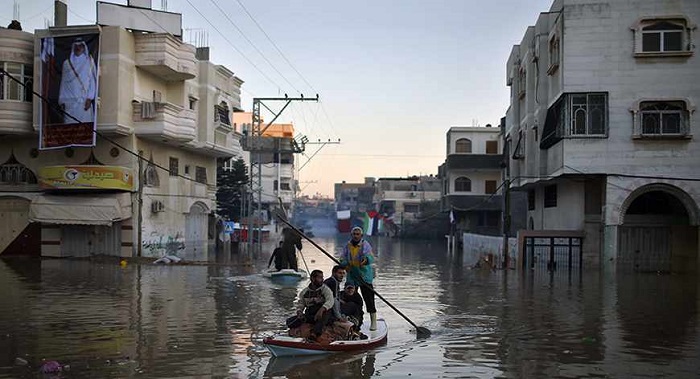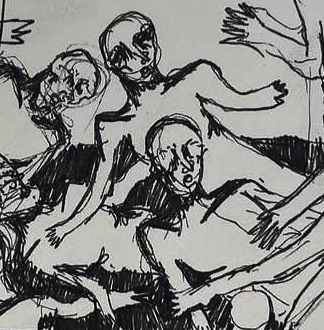
I will never forget that rainy day in December 1999. I waited for my dad to pick me up from school, but he was late, so I walked home with my friends, the wind hitting my face and raindrops knocking into my head. Rainwater blocked the road and rose to reach my knees, my body tingling from the cold. Around me, all I saw was water. Raising a leg to step forward, I felt as if I were lifting iron cuffs with my feet. Moving felt like a great achievement. I continued, as if battling with the rainwater, until finally I got home.
It’s an experience that has become all too familiar. Since then, Gaza streets have been sinking in an inch of water every winter. In summer, you can take a pleasant walk, breathing in the aromatic air to feel cool and refreshed; in winter, you have to swim to reach your goal.
It became harrowing in December 2013. The Alexa rainstorm struck at the same time the occupation was preventing fuel from entering the Gaza Strip, leading to a humanitarian disaster. The lack of fuel led to a complete shutdown of the power plant. Without fuel the generators couldn’t produce electricity, and without electricity the water pumps stopped working. Soon the rain flooded the streets. A number of main and side streets in various provinces were closed off, and the government imposed a lockdown and state of emergency until the end of the rainstorm. Hundreds of homes were flooded, pushing thousands of inhabitants out into the freezing cold and wounding dozens, a scenario that now repeats itself every winter.
In the past, the flooding that happened in the old part of Gaza City was a consequence of planning: streets are windy, sloping, and narrow, and rainwater collected in the lowest area in the street. But these days, the water covers all of Gaza: the streets in the new areas are flat and wide, but also sandy. The sand drifts with rainwater and blocks the drains, making streets sink and raising the rainwater above the entrances to buildings and homes, damaging whatever is inside. To solve this problem, Gaza needs billions of dollars to pave the streets, but this exceeds the financial capacity of the municipality.

The main problem of the swimming streets in Gaza stems from the Israeli occupation. Its bombing of Gaza destroyed the streets and weakened the infrastructure. Its unfair blockade prevents Gaza both from importing the necessary equipment to drain the streets of rainwater and from bringing in fuel to operate the power plant, which would supply electricity for running the water pumps and heating homes. Instead, Palestinians in Gaza suffer from the freezing cold in winter.
Fourteen years have passed since the fuel blockade worsened the Gaza tragedy. Everyone should have the right to live in a warm home. When will Palestinians enjoy this right and have warm homes to return to after a hard day spent collecting food under winter rain?











